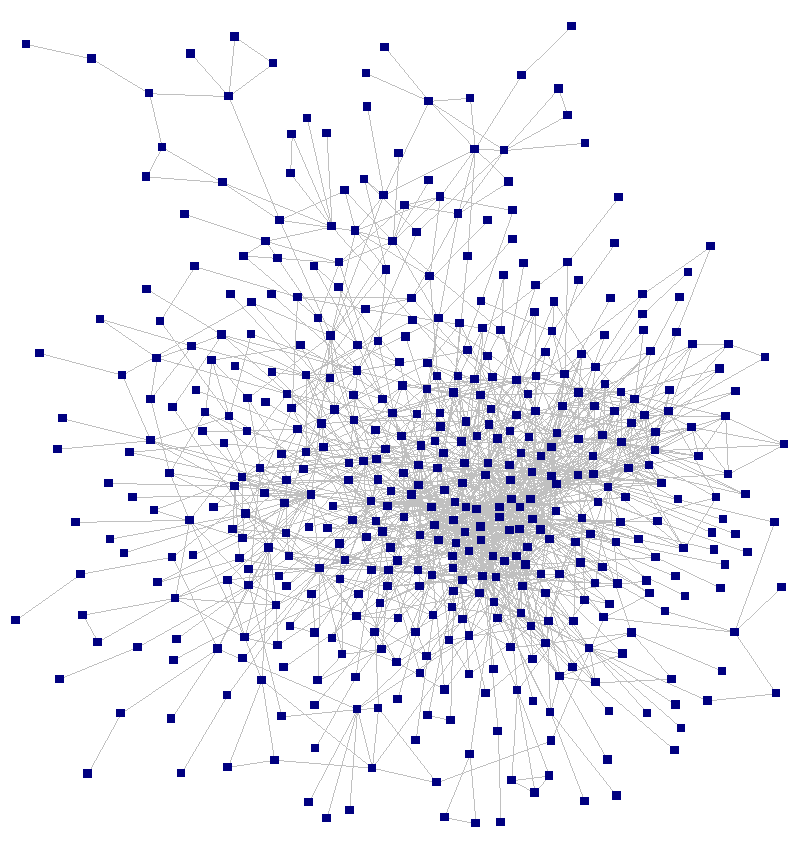 |

The Social Graph of a Famous Mathematician
Above is the social graph [a.k.a. social network map] of Paul Erdõs. He was an expert in the mathematics of networks. Erdõs practiced what he preached -- he was a weaver of social networks and thus a builder of social capital.
Erdõs was known for traveling the world and collaborating with mathematicians on problems and proofs he found interesting. He would actually live with his collaborators for a week or two while they worked out the proofs. Then he would travel on to the next collaboration. Many scientific papers resulted from these intense face-to-face collaborations. Erdõs had 507 co-authors, some of whom collaborated with each other. Erdõs's partnerships exposed the social structure of scientific discovery. An excellent mathematical analysis -- Evolution of the social network of scientific collaborations[PDF] -- is available from Laszlo Barabasi and colleagues.
These collaborations became so famous that soon mathematicians were keeping track of their Erdõs Numbers. If you co-authored an article with Erdõs you have a number of 1, if you co-authored a paper with one of his direct collaborators you have an Erdõs Number of 2, and so on. It has become very prestigious in the mathematics community to have a low Erdõs Number. Dr. Jerry Grossman maintains a data repository of Erdõs numbers and collaborators -- The Erdõs Number Project -- from which I constructed the collaborator graph.
Experts have long argued about the optimal structure of a person's professional network. Some say that a dense, cohesive network brings more social capital, while others argue that a sparse, radial network, one that provides opportunities for innovation and entrepreneurial activity, equates to greater social capital. Erdõs's network shows both patterns -- a densely connected core along with loosely coupled radial branches reaching out from the core. According to Ron Burt -- a leading expert on social capital -- this structure may be the optimal pattern for success. According to Burt, radial ties reach diverse information and knowledge to create value, while the dense, trusted ties deliver value in discovered opportunities. For a complete analysis read Burt's seminal work -- The Network Structure of Social Capital[PDF].
What is the structure of your professional network?
Home | Software | Training | Consulting | Case Studies | Blog | Contact
Copyright © 2005-9, Valdis Krebs